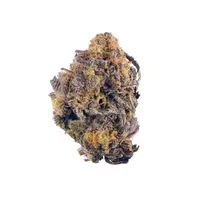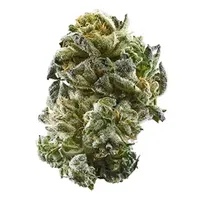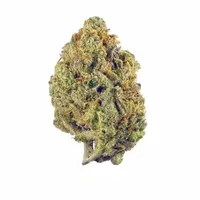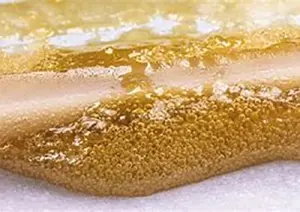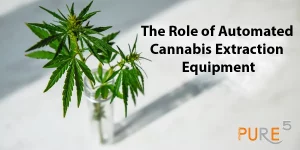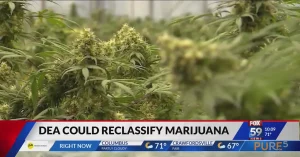The most popular methods of extraction and the types of extracts they create will be presented, and the production flow and process economics will be discussed. The data shown has accumulated over seven years of processing in the cannabis industry and can be used in process planning. Along with the process characteristics, GMP pharma processes will be discussed as the new trend in the heavily regulated cannabis industry.
Table of Contents
ToggleCannabinoids, the main driver
Natural cannabinoids
Natural cannabinoids are chemical compounds found in the cannabis plant. These compounds interact with the human body’s endocannabinoid system, which regulates various physiological and cognitive processes, including mood, memory, appetite, pain sensation, and immune response.
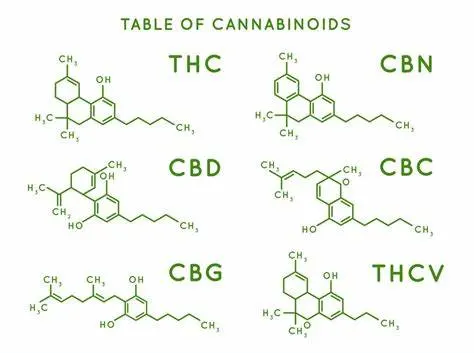
The most well-known natural cannabinoids are
- Tetrahydrocannabinol (THC): This is the primary psychoactive component of cannabis. It’s responsible for the “high” or euphoric sensation that people experience when using cannabis.
- Cannabidiol (CBD): Unlike THC, CBD is not psychoactive. It’s been studied for its potential therapeutic effects, including its ability to reduce pain, inflammation, anxiety, and seizures.
- Cannabinol (CBN): This cannabinoid is formed from the degradation of THC, often as cannabis ages. It’s mildly psychoactive and may have sedative effects.
- Cannabigerol (CBG): CBG is a precursor to other cannabinoids, often converting it into THC or CBD as the plant matures. It’s being researched for its potential therapeutic properties, including as an antibacterial agent and its ability to reduce intraocular pressure, which may benefit glaucoma patients.
- Cannabichromene (CBC): CBC is non-psychoactive and may have anti-inflammatory and analgesic properties. It’s also being studied for its potential as an antidepressant.
These cannabinoids, along with others found in smaller quantities in cannabis, interact with cannabinoid receptors in the body to produce various effects. The balance and combination of cannabinoids, as well as other compounds like terpenes, contribute to the overall impact of different strains of cannabis.
Synthetic cannabinoids:
Synthetic cannabinoids are artificial compounds designed to mimic the effects of natural cannabinoids found in the cannabis plant. They are typically created in laboratories for research or to produce drugs targeting the endocannabinoid system. These compounds are often called “designer drugs” because they are chemically engineered to produce specific effects.
Unlike natural cannabinoids, synthetic cannabinoids can vary widely in their chemical structure and potency, and they may have unpredictable effects on the human body. Some synthetic cannabinoids have been developed for medicinal purposes, such as treating nausea and vomiting associated with chemotherapy or stimulating appetite in patients with HIV/AIDS.
However, many synthetic cannabinoids are also sold illegally and are often sprayed onto dried plant material or sold as liquids to be vaporized and inhaled. These products are sometimes marketed as “synthetic marijuana” or “herbal incense,” but they can have much stronger effects than natural cannabis and can pose serious health risks.
The use of synthetic cannabinoids has been associated with a range of adverse effects, including
- Severe anxiety and panic attacks
- Psychosis and hallucinations
- Rapid heart rate and elevated blood pressure
- Nausea and vomiting
- Seizures and convulsions
- Kidney damage
- Respiratory problems
In some cases, synthetic cannabinoids have been linked to overdose deaths. Due to the potential dangers associated with these substances, many countries have banned or heavily regulated their production, sale, and use. Additionally, the chemical composition of synthetic cannabinoids is frequently changing as manufacturers alter their formulas to evade legal restrictions, making them even more unpredictable and dangerous.
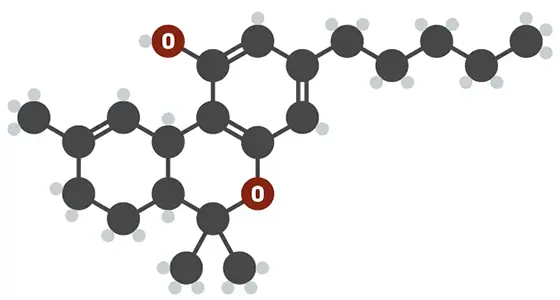

The story’s moral is that there are varying levels of consciousness in the animate world. These levels range from microbes and plants to animals and humans. As consciousness elevates, plants develop their level of consciousness. This results in the creation of intelligent proteins called enzymes that manage plant metabolism. Enzymes recreate every molecule of the plant with a strict configuration dictated by nature, which is very repeatable. However, the result is never the same when humans try to recreate that molecule from inanimate nature. We may see one desired effect, but we could also see five unwanted side effects. Hence, it is essential to be very aware of this fact.
Terpenes, the less-known multiplier
Terpenes, often referred to as the “less-known multiplier” in the cannabis industry, play a crucial role in shaping the overall effects, flavors, and therapeutic properties of cannabis products. While cannabinoids like THC and CBD receive much attention, terpenes are gaining recognition for their significant contributions to the entourage effect—the synergistic interaction between cannabinoids and terpenes that enhances the overall therapeutic effects of cannabis.
Mono terpenes
Monoterpenes are a class of organic compounds found in various plants, including cannabis, and are known for their intense aromas. They comprise two isoprene units and have the molecular formula C10H16. Monoterpenes contribute to the characteristic scents of many plants and are often used in aromatherapy and herbal medicine for their potential therapeutic effects.
In cannabis, monoterpenes are produced in the trichomes, the tiny glandular hairs covering the plant’s flowers and leaves. These compounds are responsible for the distinctive smells of different cannabis strains and can vary widely in their aromatic profiles.
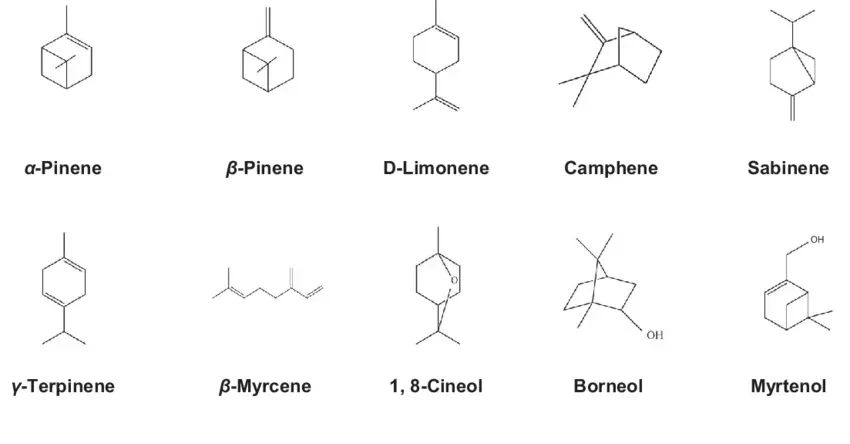
Some common monoterpenes found in cannabis include
-
- Myrcene
This is one of the most abundant terpenes in cannabis and is also found in hops, thyme, and lemongrass. Myrcene has a musky, earthy aroma and is thought to have sedative and relaxing effects.
-
- Limonene
Limonene has a citrusy aroma and is found in the peels of citrus fruits like lemons, oranges, and limes. It is believed to have mood-enhancing and stress-relieving properties.
-
- Pinene
Pinene comes in two forms: alpha-pinene and beta-pinene. Alpha-pinene has a piney aroma and is found in pine trees and conifers. Beta-pinene has a woodsy scent found in herbs like rosemary and basil. Pinene is thought to have anti-inflammatory and bronchodilator effects.
-
- Linalool
Linalool, which has a floral aroma with hints of spice, is found in lavender, coriander, and cinnamon. It is believed to have calming and anti-anxiety effects.
-
- Terpinolene
Terpinolene has a complex aroma with pine, floral, and herbal scent notes. It is found in nutmeg, cumin, and lilacs. Terpinolene is thought to have sedative and antioxidant properties.
These monoterpenes, along with others found in cannabis, can interact with other compounds like cannabinoids to produce what is known as the entourage effect. The combination of compounds enhances the overall therapeutic effects of the plant.
Sesque Terpenes
Sesquiterpenes are a class of organic compounds with three isoprene units, making them more extensive and complex than monoterpenes. Their molecular formula is C15H24. Sesquiterpenes are commonly found in various plants, including cannabis, and contribute to their distinctive aromas and potential therapeutic effects.
In cannabis, sesquiterpenes are produced in the trichomes along with cannabinoids and monoterpenes. While they are typically found in lower concentrations compared to monoterpenes, sesquiterpenes can still play a significant role in the overall aromatic profile and therapeutic properties of cannabis strains.
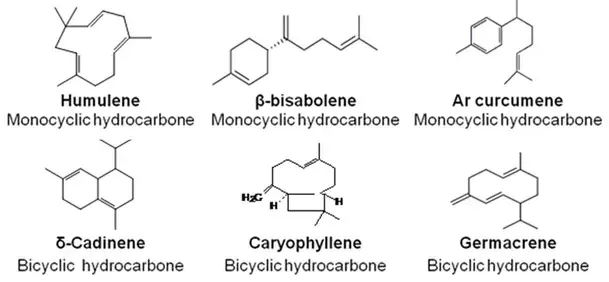
Some common sesquiterpenes found in cannabis include:
-
- β-Caryophyllene.
This sesquiterpene has a spicy, peppery aroma and is also found in black pepper, cloves, and cinnamon. β-Caryophyllene is unique among terpenes because it can also interact with the body’s endocannabinoid system by binding to cannabinoid receptors. It is believed to have anti-inflammatory and analgesic effects.
-
- Humulene
Humulene has an earthy, woody aroma in hops, coriander, and cloves. It is believed to have anti-inflammatory and appetite-suppressant properties.
-
- Caryophyllene oxide
This sesquiterpene is a derivative of β-caryophyllene and has similar spicy, peppery notes. It is believed to have antifungal and antimicrobial properties.
-
- Guaiol
Guaiol has a woody, piney aroma found in cypress trees and guaiacum. It is believed to have antioxidant and antimicrobial properties.
-
- Farnesene
Farnesene has a sweet, floral aroma similar to apples, roses, and turmeric. It is believed to have anti-inflammatory and antioxidant effects.
These sesquiterpenes, along with cannabinoids and monoterpenes, contribute to the entourage effect in cannabis, where the combination of compounds enhances the overall therapeutic effects of the plant.
The foundation of strain-specific medicine
Strains for Energy & Creativity
When selecting a cannabis strain for creativity, it’s essential to consider the terpene profile and cannabinoid content, as well as personal preferences and tolerance levels. While individual responses to cannabis can vary, some strains are commonly associated with boosting creativity and enhancing focus. Here are a few strains that are often recommended for stimulating creativity:
1. Jack Herer
Named after the renowned cannabis activist, Jack Herer is a Sativa-dominant hybrid known for its uplifting and energizing effects. It typically has a piney and earthy aroma with hints of citrus. Jack Herer can provide a clear-headed high that may enhance creativity and productivity.
2. Durban Poison
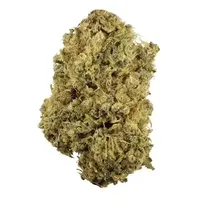
3. Green Crack
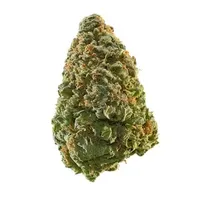
Remember to start with a low dose, especially if you’re new to cannabis or trying a new strain, and gradually increase as needed to find the optimal balance between creativity and comfort. Additionally, consider factors such as the time of day and your surroundings when using cannabis for creative purposes.
Strains for Sex & Arousal
When it comes to selecting a cannabis strain for enhancing sex and arousal, it’s essential to consider the effects of different strains on mood, relaxation, and sensory perception. While individual responses can vary, certain strains are commonly associated with boosting libido, heightening sensations, and promoting relaxation. Here are a few strains that are often recommended for enhancing sexual experiences:
1. OG Kush
OG Kush is a popular Indica-dominant hybrid known for its relaxing and euphoric effects. It has a distinctive earthy and woody aroma with hints of pine and spice. OG Kush can help promote relaxation and reduce stress, potentially enhancing intimacy and arousal.
2. Sour Diesel
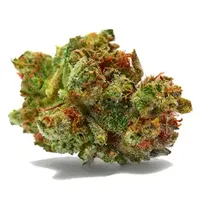
3. Blue Dream
Blue Dream is a hybrid strain with balanced effects that combine an indica’s relaxation with a Sativa’s euphoria. It has a sweet and fruity aroma with hints of blueberry. Blue Dream can promote feelings of relaxation and happiness, making it a popular choice for enhancing sexual experiences.
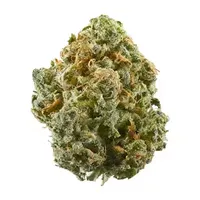
Strains for Relaxation
If you’re looking for cannabis strains that are known for their relaxing and calming effects, consider trying one of the following:
-
Granddaddy Purple
This Indica-dominant strain is renowned for its deeply relaxing effects and ability to induce a state of physical sedation. It’s often used to relieve stress, anxiety, and insomnia, making it an excellent choice for relaxation and nighttime use.
-
- Purple Kush
- Purple Kush
Another Indica-dominant strain, Purple Kush, is prized for its deeply relaxing and sedating effects. It’s often used to alleviate pain, muscle tension, and insomnia, allowing users to achieve a state of deep relaxation and tranquility.
-
- Bubba Kush
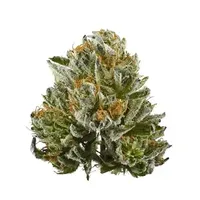
Remember that individual responses to cannabis strains can vary, so it’s essential to start with a low dose and gradually increase as needed to find the strain and dosage that works best for you. Additionally, always consume cannabis responsibly and in accordance with local laws and regulations.
Strains for Euphoric High
If you’re seeking a euphoric high, you’ll want to explore cannabis strains known for their uplifting and mood-enhancing effects. Here are some popular strains that are often praised for their ability to induce feelings of euphoria:
1. Girl Scout Cookies (GSC)
GSC is a hybrid strain known for its potent effects and sweet, earthy flavor. It offers a balanced high that combines relaxation with euphoria, making it a favorite among many cannabis enthusiasts.
2. Pineapple Express
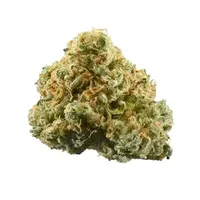
3. Super Lemon Haze
Super Lemon Haze is a Sativa-dominant strain with a zesty lemon aroma and potent cerebral effects. It’s celebrated for uplifting mood, boosting energy, and inducing euphoria.
Keep in mind that individual experiences with cannabis can vary, so it’s essential to start with a low dose and experiment with different strains to find the one that best suits your preferences and desired effects. Additionally, consider factors such as cannabinoid and terpene profiles, consumption method, and tolerance level when selecting a strain for a euphoric high.
Extraction Methods
Extraction methods are techniques used to isolate and concentrate the desired compounds from plant material, such as cannabinoids and terpenes from cannabis. These methods are employed to produce various cannabis products, including oils, concentrates, edibles, and topicals. Here are some standard extraction methods used in the cannabis industry:
Each extraction method has advantages and disadvantages in terms of safety, efficiency, and the quality of the final product. Factors such as cost, scalability, and regulatory considerations also influence the extraction method used by cannabis producers.
Solventless Extraction
Solventless extraction refers to a method of extracting cannabinoids and terpenes from cannabis without the use of solvents. Instead, solventless extraction techniques rely on mechanical or physical methods to separate the desirable compounds from the plant material. Here are two standard solventless extraction methods:
-
- Rosin Press
Rosin pressing involves applying heat and pressure to cannabis flower or hash to squeeze out the resinous oils containing cannabinoids and terpenes. The process typically involves placing the cannabis material between parchment paper and pressing it using a specialized rosin press. The heat and pressure cause the trichomes to rupture, releasing the oil onto the parchment paper. Rosin pressing is known for its simplicity, safety, and ability to produce decent-quality concentrates without using solvents.
-
- Ice Water Hash (Bubble Hash) Extraction
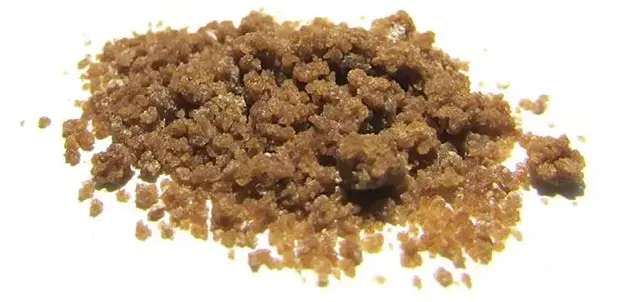
Solventless extraction methods are popular among cannabis enthusiasts and producers who prioritize purity, flavor, and safety. They are considered safer and more environmentally friendly than solvent-based extraction methods, as they do not involve potentially harmful chemicals. Solventless extracts often retain more of the plant’s natural terpenes and cannabinoids, resulting in a fuller flavor profile and potentially enhanced therapeutic effects.
Solvent extraction
-
- Ethanol extraction:
Ethanol extraction is a popular method for extracting cannabinoids from cannabis plant material. It involves using ethanol (known as grain alcohol) as a solvent to dissolve the desired compounds, which are then separated from the plant material to produce cannabis extracts.
Ethanol extraction is favored for its efficiency, versatility, and safety. Ethanol is generally considered safe for human consumption and commonly used in food and pharmaceutical applications. Additionally, ethanol extraction can preserve a wide range of cannabinoids and parts of the terpenes, resulting in a full-spectrum extract. This is the best method of obtaining distillates after winterization and distillation. However, due to the high boiling point of ethanol, only part of the sesquiterpenes are preserved as the monoterpenes are left with the solvent.
-
- CO2 Extraction
CO2 extraction, also known as SFO (supercritical fluid extraction), is commonly used to extract cannabinoids and terpenes from cannabis plant material. It involves using carbon dioxide (CO2) in a supercritical state as a solvent to dissolve and extract the desired compounds from the plant material.
CO2 extraction is favored for producing high-quality extracts with precise control over the extraction parameters. Supercritical CO2 is non-toxic, non-flammable, and generally recognized as safe for human consumption, making it a preferred solvent for cannabis extraction. Additionally, CO2 extraction allows for the selective extraction of specific compounds by adjusting the pressure and temperature conditions, resulting in extracts with customized cannabinoid and terpene profiles. However, due to the low density, the selectivity of CO2 is not very strict, and post-processing via a winterization with ethanol and distillation is necessary to produce commercial products. Also, the monoterpenes are destructed at high pressure, and the system’s temperature, as well as any existing moisture in the plant, converts to a dicarboxylic acid, which lowers the PH of the extracts. CO2 extraction equipment can be expensive and requires specialized knowledge and expertise to operate effectively.
-
- Hydrocarbon Extraction
Hydrocarbon extraction is commonly used to extract cannabinoids and terpenes from cannabis plant material. This technique involves using hydrocarbon solvents, such as butane, propane, or a mixture of both, to dissolve and extract the desired compounds from the plant material.
Hydrocarbon extraction is favored for its efficiency and ability to produce high yields of potent extracts. Hydrocarbon solvents can effectively dissolve many cannabinoids and terpenes, resulting in full-spectrum extracts with robust flavor profiles and enhanced therapeutic effects. However, due to its high explosive rate, it’s essential to properly control the extraction process to ensure the final product’s safety and minimize residual solvents’ risk. Additionally, hydrocarbon extraction equipment requires careful handling and ventilation to prevent accidents and ensure worker safety.
-
- Aerosol Extraction
R134a extraction, also known as hydrofluorocarbon (HFC) extraction or refrigerant extraction, is a method used to extract cannabinoids and terpenes from cannabis plant material. This technique involves using R134a, a non-flammable hydrofluorocarbon refrigerant, as a solvent to dissolve and extract the desired compounds from the plant material.
R134a extraction is favored for its efficiency and ability to produce high yields of potent extracts. It is non-toxic, non-flammable, and generally regarded as safe for use in food and pharmaceutical applications, making it a suitable solvent for cannabis extraction. Due to the strict solubility of oleoresins, the wax and lipids do not penetrate during extraction. Most extracts obtained through that process do not need to be winterized or overly post processed.
How to preserve the actives
Preserving the active compounds in cannabis extracts is crucial for maintaining their potency, flavor, and therapeutic effects. Here are some tips for protecting the actives in cannabis extracts:
-
- Solvent Selection
As we outlined, due to the solvent’s polarity, various extract outputs correspond to the process chosen. Be sure to select your solvent to produce the proper extract for your product. If you need to make vapes or edibles, complete terpene preservation is required, as the aerosol extraction provides. If you are producing distillates, CO2 and ethanol extraction is fine.
-
- Storage
Store cannabis extracts in airtight containers in a cool, dark, and dry environment to minimize the degradation of cannabinoids and terpenes. Exposure to light, heat, and moisture can accelerate the breakdown of these compounds. Consider using opaque or UV-resistant containers to protect extracts from light exposure.
-
- Temperature Control
Keep extracts away from extreme temperatures, as heat can cause cannabinoids and terpenes to degrade. This should be considered during the extraction method selection as ethanol, CO2, and rosin use excessive heat that oxidizes some of the components. Store extracts in a temperature-controlled environment, such as a cool closet or refrigerator, to maintain stability and potency. The typical low-heat method of extraction is by hydrocarbon and aerosol.
-
- Air Exposure
Minimize exposure to air, as oxygen can oxidize cannabinoids and terpenes, leading to degradation. During the extraction, select an airless method to avoid oxidation. Store extracts in airtight containers, and consider using inert gases, such as nitrogen or argon, to displace oxygen and create a protective atmosphere inside the container. A typical method of extraction with no air exposure is hydrocarbon and aerosol.
By following these tips, you can help preserve the active compounds in cannabis extracts and maintain their quality and efficacy over time. Proper storage, handling, and quality control ensure extracts retain their potency, flavor, and therapeutic benefits.
Process Economics
The economics of the extraction process in the cannabis industry involve various factors that affect the cost, efficiency, and profitability of extracting cannabinoids and terpenes from cannabis plant material. Here are some key aspects to consider:
-
- Equipment Costs
The initial investment in extraction equipment can be a significant factor in the economics of the extraction process. Different extraction methods require different types of equipment, ranging from relatively simple setups for solventless extraction to more complex and expensive machinery for solvent-based extraction methods like CO2 or hydrocarbon extraction. Also, most require regulated facility build-up, such as C1D1 rooms and ventilation, which adds to the system cost.
-
- Operating Costs
Operating costs include raw materials (cannabis plant material), energy costs for running extraction equipment, labor costs, maintenance and upkeep, and overhead expenses such as facility space rent. These costs can vary depending on factors such as the scale of operations, the extraction method used, and local regulations.
-
- Yield and Efficiency
The efficiency of the extraction process and the yield of cannabinoids and terpenes obtained from the plant material are critical factors in determining the economics of extraction. Higher extraction efficiencies and yields result in more products being extracted from the same amount of starting material, which can improve profitability. Factors that affect yield and efficiency include extraction method, extraction parameters (e.g., temperature, pressure), and the quality of the starting material.
-
- Product Quality and Market Demand
The quality of the extracted product, including factors such as cannabinoid and terpene profiles, purity, and consistency, can affect its market value and demand. High-quality extracts that meet consumer preferences and regulatory standards may command higher prices in the market, improving profitability.
-
- Regulatory Compliance
Compliance with regulatory requirements, including licensing, permits, and compliance with Good Manufacturing Practices (GMP) or other quality standards, can add additional costs to the extraction process. Ensuring regulation compliance is essential for legal operation and market access but can also increase operational expenses.
-
- Economies of Scale
As extraction operations scale up and production volumes increase, economies of scale may be realized, leading to lower per-unit production costs. Larger-scale operations may benefit from efficiencies in equipment utilization, bulk purchasing of raw materials, and reduced overhead costs per unit of production.
-
- Value-Added Products and Diversification
Extractors may enhance their profitability by producing value-added products such as concentrates, tinctures, edibles, or topicals from the extracted cannabinoids and terpenes. Diversifying product offerings can help capture different market segments and increase revenue streams. The best approach is to minimize your processing steps and create natural products, if possible, in a single step.
-
- Market Dynamics
Market factors such as supply and demand dynamics, competition, pricing trends, and regulatory changes can impact the economics of the extraction process. Understanding market dynamics and adapting extraction strategies is essential for maintaining competitiveness and profitability. Recent dynamics include the bans on artificial terpene flavoring and the reintroduction of terpenes in products.
Below is a summary of the above process economic factors such as CapEx, OpEx, efficiency, solvent recovery, energy cost, etc.
| Parameters | CO2 | Ethanol | Butane | R134a | Units |
|---|---|---|---|---|---|
| CapEx | $450,000.00 | $125,000.00 | $250,000.00 | $125,000.00 | $ |
| Facility Compliance | $50,000.00 | $100,000.00 | $200,000.00 | $0.00 | $ |
| 20L Volume | 3 | 3 | 3 | 3 | lb |
| Particle size | 0.5 | NA | NA | NA | mm |
| Extraction Time | 120 | 40 | 40 | 60 | min |
| Efficiency | 90% | 85% | 95% | 97% | % |
| Recovery Time | 180 | 180 | 60 | 60 | min |
| Solven per run | 12 | 10 | 8 | 8 | kg |
| Pressure | 310 | 1 | 6 | 9 | bar |
| Recovery Efficiency | 90% | 85% | 90% | 99% | % |
| Solvent Loss | 1.2 | 1.5 | 0.8 | 0.08 | kg |
| Solvent Cost | $10.00 | $7.00 | $10.00 | $7.00 | $ |
| Cost per Run | $12.00 | $10.50 | $8.00 | $0.56 | $ |
| Power | 20 | 10 | 10 | 2 | kw |
| Energy cost | $6.00 | $3.00 | $3.00 | $0.60 | $ |
| Total per Run | $18.00 | $13.50 | $11.00 | $1.16 | $ |
| Run Cost per Month | $3,240.00 | $2,430.00 | $1,980.00 | $208.80 | $ |
| Cost to Install | $500,000.00 | $225,000.00 | $450,000.00 | $125,000.00 |
Overall, the economics of the extraction process in the cannabis industry are influenced by a combination of equipment, operating costs, yield and efficiency, product quality, regulatory compliance, economies of scale, value-added products, and market dynamics. By carefully managing these factors and optimizing extraction processes, extractors can improve efficiency, reduce costs, and enhance profitability in the competitive cannabis market.
Conclusion
By implementing these strategies, cannabis extraction businesses can improve the economics of the extraction process, reduce costs, and increase profitability in the competitive cannabis market. Ongoing optimization and innovation are essential for maintaining a competitive edge and sustaining long-term success in the industry.

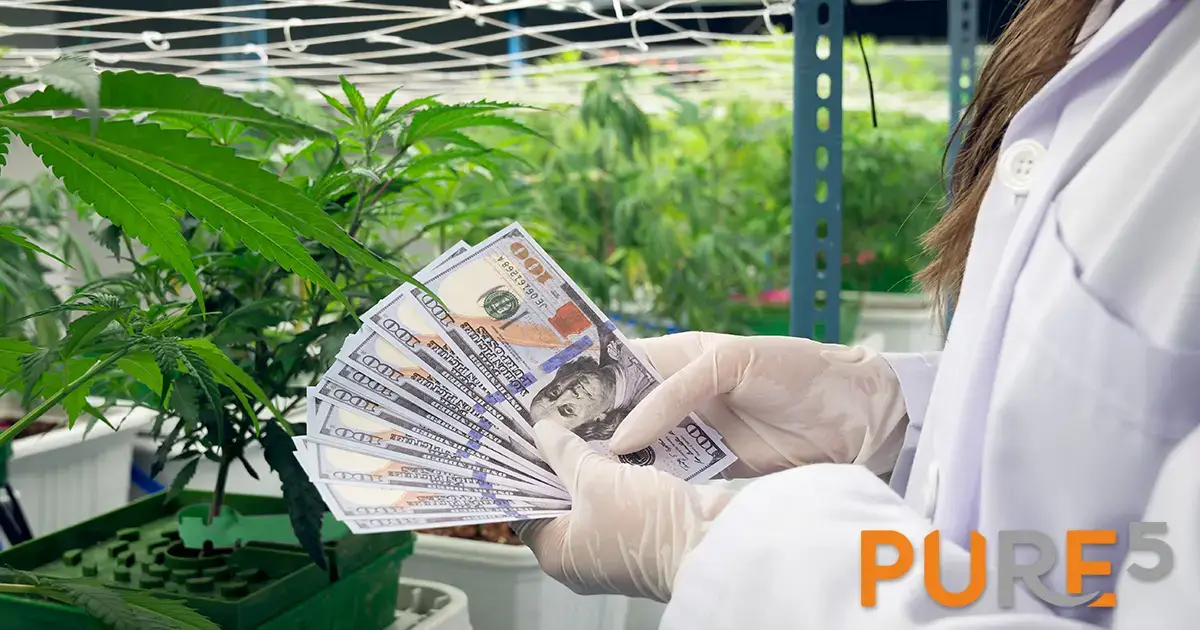

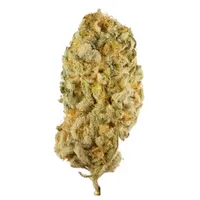
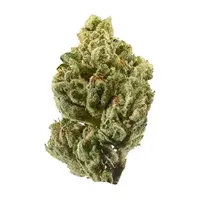
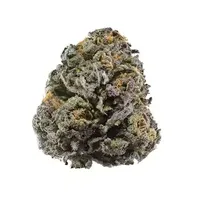 Granddaddy Purple
Granddaddy Purple